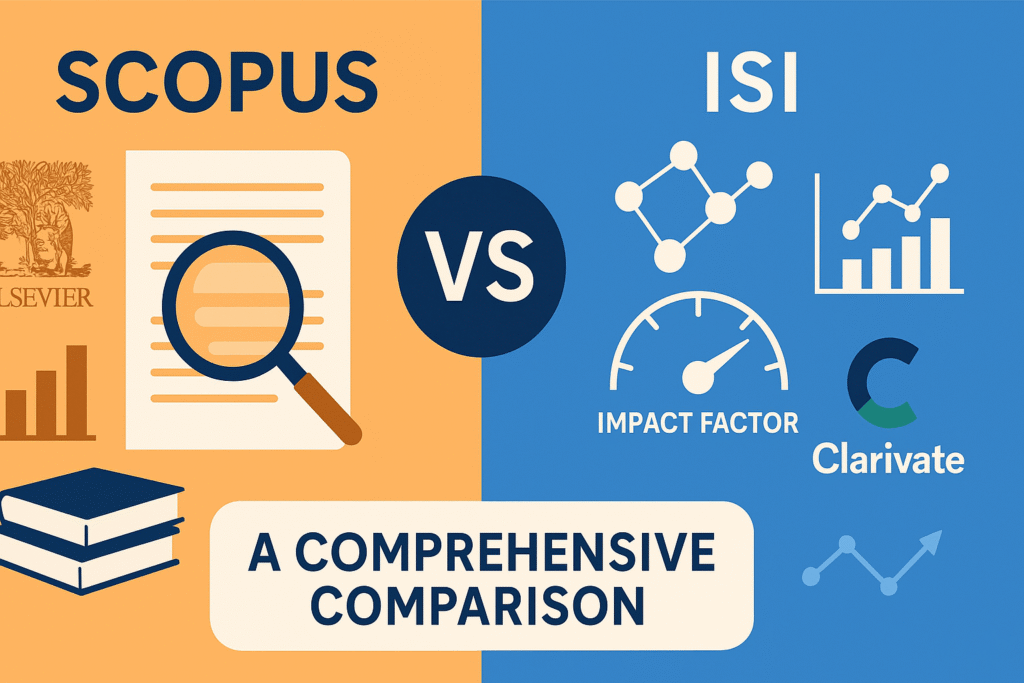
Scopus vs. ISI: A Comprehensive Comparison
Introduction:
Academic publishing plays a critical role in the dissemination of research, and the quality of the journals in which research is published is a vital factor for researchers. It helps them to evaluate the quality of research published by their peers and also to demonstrate their research impact. In this regard, the two most commonly used indexing and citation analysis databases are Scopus and ISI. This blog post provides a comprehensive comparison between Scopus and ISI and helps readers decide which one to use.
What is Scopus?
Scopus is a widely used citation database that provides access to abstracts and citation data of academic journals, books, and conference proceedings. It is owned by Elsevier and covers a broad range of subjects across science, technology, medicine, social sciences, and humanities. Scopus has more than 25,000 indexed journals, and it offers a wide range of metrics, including citation counts, h-index, and SJR. Scopus also allows for citation analysis, author profiling, and visualization.
What is ISI?
ISI stands for the Institute for Scientific Information, and it is a bibliographic database that provides citation analysis of academic research. ISI is owned by Clarivate Analytics, and it offers a wide range of services, including indexing of scholarly literature, analysis of citation data, and calculating journal impact factor. ISI offers access to the Web of Science Core Collection, which includes the Science Citation Index, the Social Sciences Citation Index, and the Arts and Humanities Citation Index.
Comparison:
Citation Analysis:
Both Scopus and ISI offer citation analysis, which is the process of evaluating the impact of academic research by analyzing the number of times a research paper is cited by other researchers. However, Scopus covers a broader range of subjects than ISI, and it indexes more journals, which makes it a more comprehensive citation database. Scopus also provides more metrics than ISI, including the SJR and the h-index, which provides a more complete picture of research impact.
Impact Factor:
The impact factor is a metric used to evaluate the importance of a journal by measuring the frequency with which the average article in a journal is cited in a particular year. ISI is best known for its calculation of the journal impact factor, which is widely used in academic publishing. However, Scopus also offers journal metrics, including the CiteScore and the SJR, which provide an alternative to the impact factor.
Indexing:
Both Scopus and ISI index academic journals, books, and conference proceedings. However, Scopus covers a broader range of subjects, and it indexes more journals than ISI. Scopus also indexes more conference proceedings and offers advanced search features that make it easier to search for and locate relevant research.
Access:
Both Scopus and ISI require a subscription for access. However, Scopus is more expensive than ISI, which makes it less accessible for smaller institutions or individual researchers. Scopus also offers more features and services, which can be overwhelming for some users.
Conclusion:
